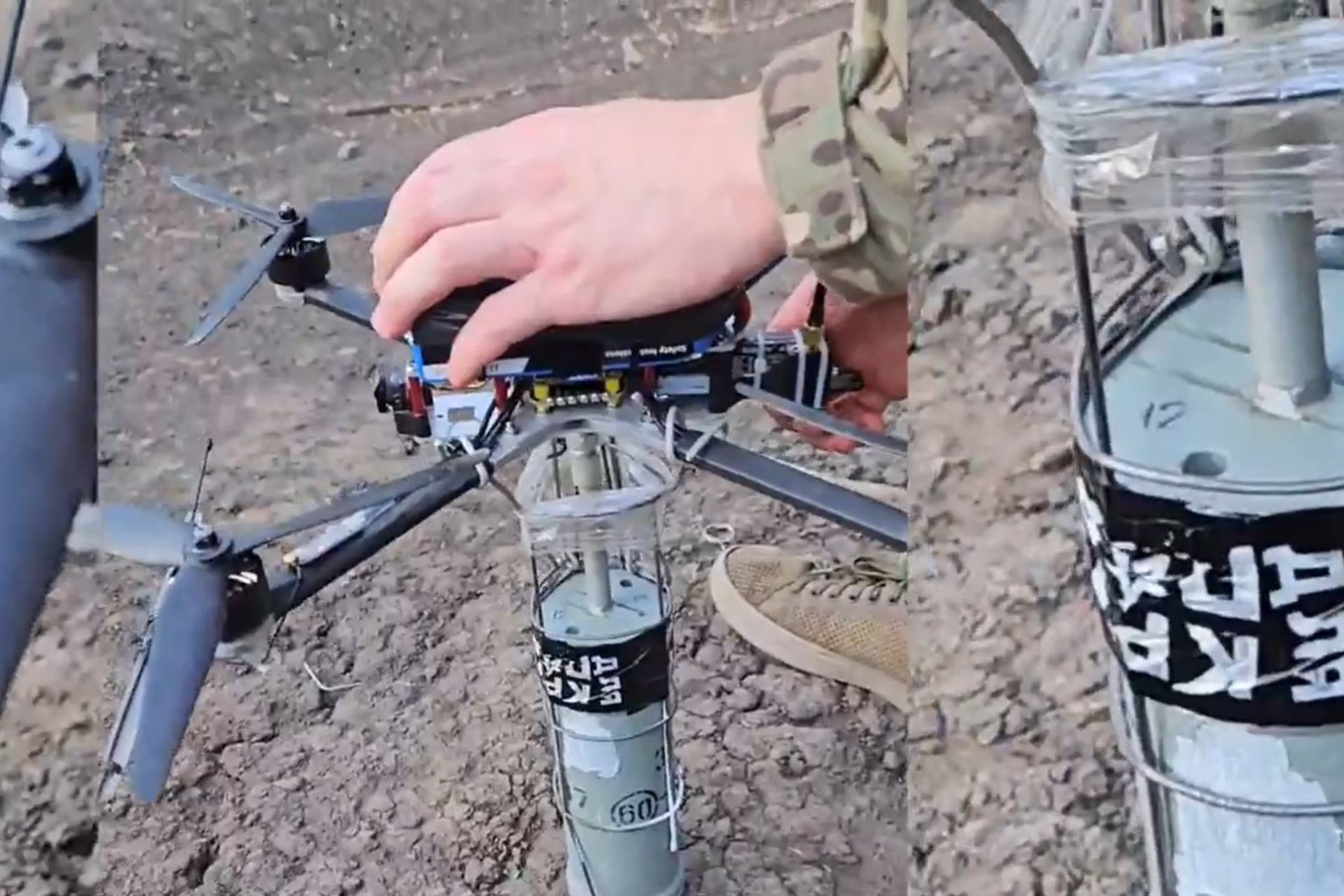Breaking News
Ukrainian and Russian Forces Use Dragon Drones in Escalation of Thermite Warfare.
The conflict in Ukraine has witnessed the emergence of new military technologies, with both Ukrainian and Russian forces now deploying "dragon drones"—unmanned aerial vehicles equipped to disperse thermite over enemy positions. This development marks a significant escalation in the use of incendiary devices on the battlefield, potentially altering combat dynamics and raising concerns about the humanitarian implications of such weapons.
Follow Army Recognition on Google News at this link

Piloted in first-person view through onboard cameras (FPV), these drones have proven effective in dislodging opposing soldiers from their shelters and destroying military equipment (Picture source: X Channel @Osinttechnical)
Initially, Ukrainian forces began using these drones capable of releasing thermite—a mixture of aluminum powder and iron oxide that burns at approximately 2,200°C—over enemy positions. Videos circulated on social media showed drones flying at low altitudes, pouring torrents of flames over Russian troops concealed in tree lines and trenches. Piloted in first-person view through onboard cameras (FPV), these drones have proven effective in dislodging opposing soldiers from their shelters and destroying military equipment.
The thermite dispersed by these drones is highly effective at burning various materials, including metal, and cannot be extinguished with water, making countermeasures difficult. A small amount of thermite can penetrate 4 mm of armor in a few seconds at an estimated cost of $10, causing significant damage at low cost.
In response, Russian forces have developed their own versions of "dragon drones." Recent videos show Russian soldiers attaching thermite canisters to FPV drones and deploying them over Ukrainian positions. While initial footage suggests that these Russian drones emit primarily showers of sparks with less impact, their use indicates a rapid adaptation to new warfare technologies.

Recent videos show Russian soldiers attaching thermite canisters to FPV drones and deploying them over Ukrainian positions. (Picture source: X Channel @JulianRoepcke)
The use of thermite in conflict is not new; it was employed during World War II by both Allied and Axis forces, notably in the form of hand grenades and incendiary bombs. However, its application via drones represents an innovative approach, combining precise targeting with the ability to inflict widespread damage. The psychological impact of these weapons is also significant, potentially affecting the morale of opposing troops.
The deployment of incendiary weapons like thermite is strictly regulated by international humanitarian law. Protocol III of the Geneva Convention, which came into force in 1983, prohibits the use of air-delivered incendiary weapons in populated areas and limits their use against military targets located in civilian zones.
Both parties have been criticized by human rights organizations due to the risks to civilians and the severe injuries these weapons can cause, leading to long-term physical and psychological consequences.
The conflict in Ukraine has become a testing ground for new military technologies, particularly in the field of unmanned systems and drone warfare. Ukrainian and Russian forces continue to innovate, rapidly developing new tools and countermeasures to gain an advantage on the battlefield. The introduction of "dragon drones" by both sides illustrates the accelerated pace of technological adaptation in modern conflicts.
Military analysts suggest that the proliferation of such technologies could have implications beyond the current conflict. As both parties refine the use of drone-based incendiary weapons, other nations may draw inspiration from these developments and create similar capabilities, potentially altering the nature of future conflicts.


























